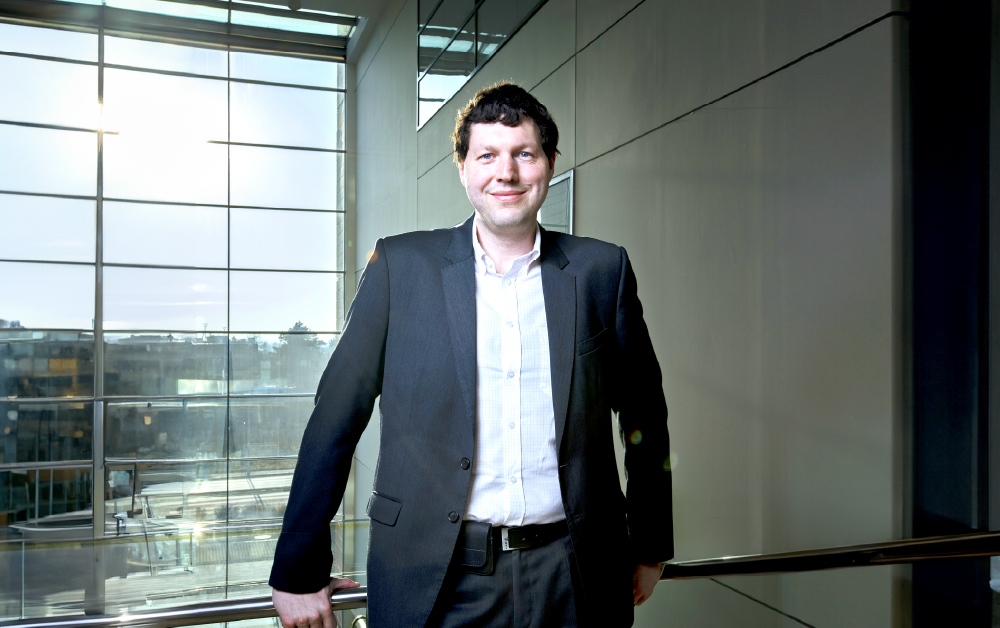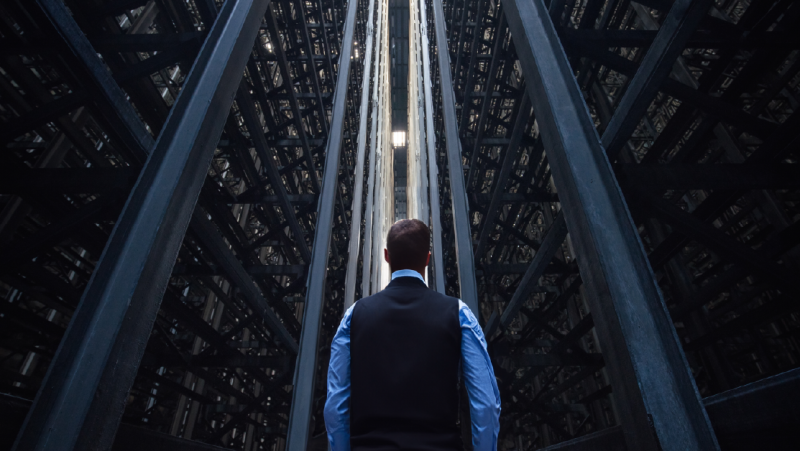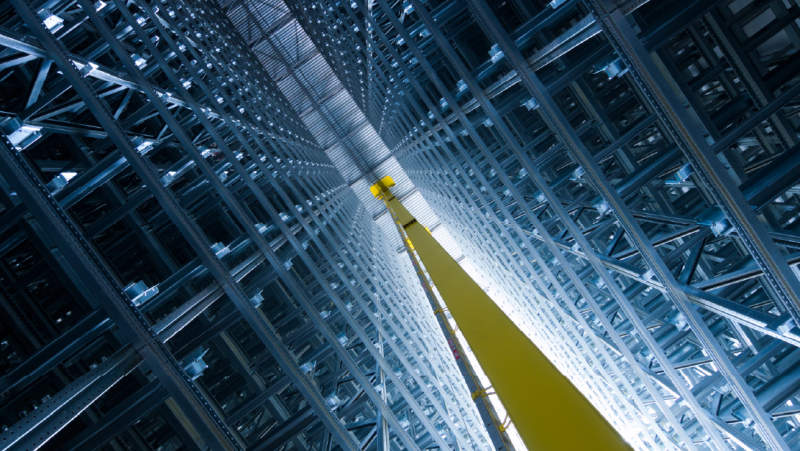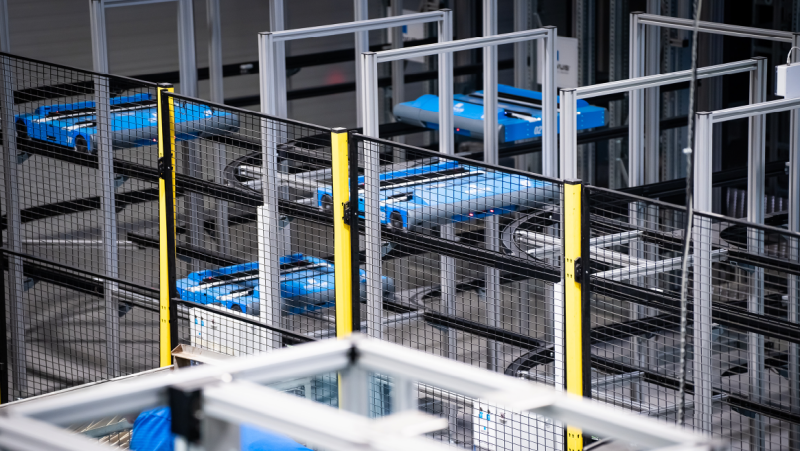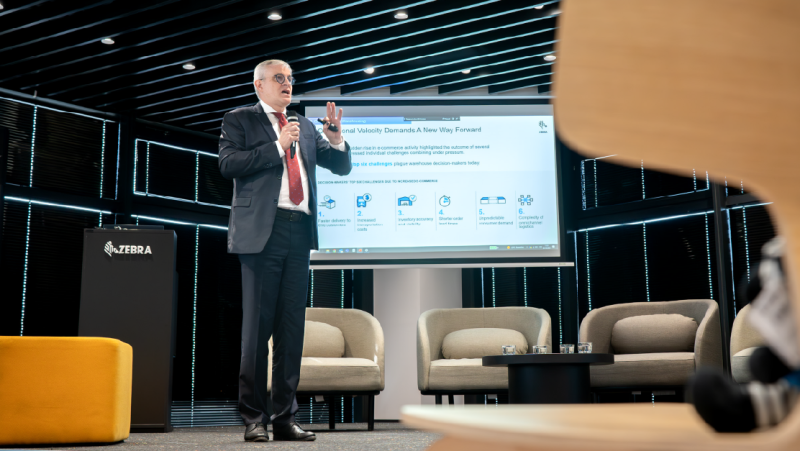Petr Kraus, SPORTISIMO: Automation technologies can work miracles. But not on their own – these miracles take effort.
- Automation
- Interview
Petr Kraus has been in IT for over two decades. He’s full of insights into retail, logistics and manufacturing. The interconnectedness of these areas is what lets him view things with the needed distance. One recent project that he’s just completed is for the Ostrava central distribution centre of the sporting goods distributor SPORTISIMO, s.r.o. What questions did he consider? What challenges did he face? Did everything always turn out smoothly when he knew exactly what he wanted? How did he select suppliers and technologies, and what could he recommend, based on his rich experience, to other companies seeking to automate? We asked Petr about all this and more.
What does logistics look like at SPORTISIMO?
Most of our goods from suppliers pass through the central warehouse. These are textiles, footwear and sporting equipment. The latter includes non-standard or even oversized goods such as skis, barbells and hockey sticks. When storing our goods, we have to distinguish their sizes, weights, packaging types, turnover and also their seasonality. Numerous parameters govern the logistics of supplying shops, i.e. replenishment. We transport goods to shops based on their sales; we replenish their sizes, their colours. Large volumes are shipped when opening a new branch or as we move into the individual seasons. All this is also complemented by the withdrawal of the last season’s goods, which comes at a different time each year – based on sales, which depend on the weather. We supply goods to e-commerce, which represents twenty percent of our overall revenue, from both our distribution centre and individual shops. Our logistics processes are centralised for all the countries we serve.
You’re mentioning a central distribution warehouse for Europe. How has your idea of the future of such a logistics junction evolved over time?
For many years, three warehouse halls with a size of 57,600 m2 in Rudná u Prahy served as our distribution centre, with each hall storing a different assortment of goods. As our e-commerce volume grew, consolidating orders took more and more work, leaving us unable to provide our customers with sufficient delivery speed. We thus started thinking about how to eliminate the handicap of three warehouse halls and sought a solution that would offer a better service to our customers.
We decided to build a new distribution centre with a size of 90,000 m2 (12.6 football fields) and chose Ostrava as its location. Through this step, we eliminated the ineffectiveness coming from the original three halls, increased our warehouse throughput, improved logistics quality and planned to reduce costs by roughly twenty percent. Automation and the installation of new technologies helped us achieve our goals. We have a combination of various technologies in Ostrava, such as miniload, semi-automatic VNA trucks, Pick Towers, Pick by Light systems, several kilometres of conveyor track with lots of intersections, and a robotic work centre for palletising goods and depalletising them.
Did you know right from the start what you wanted to achieve, what your goal was?
I can see today that we had a quite precise idea of what we wanted. We knew our burning issues, for example the consolidation of orders from different warehouse halls, our slow and laborious picking and especially the integration of e-commerce into our logistics. We had numbers, daily outputs, maximum hourly outputs and visions for the future. On the other hand, we didn’t know which technologies were most appropriate for us. We therefore turned to a consulting firm and ran several performance simulations for the individual solution options. The consultants helped us prepare a selection procedure. And then came the rather bumpy contractor selection process, in which we stated that we only wished to cooperate with a single main partner, who would communicate with the remainder – subcontractors.
What were the key criteria for selecting this contractor and the individual technologies?
We assessed their know-how within our vertical. Important factors were the competence to support us long-term, the capability to be a stable partner and the ability to provide a solution that would remain available and functional, without outages. We required a comprehensive delivery and experience with the technologies under consideration. We also compared the overall investment costs with those for the investment’s subsequent operation – the TCO (Total Cost of Ownership).
The majority of this project’s implementation is now behind you; how do you see it with the distance of time? Has your view of it changed, and is anything more important than it seemed back then?
We believe and can see that the proposed technologies were chosen correctly. We don’t perceive ourselves as limited by performance or a bad selection or proposal. However, we still have room for improvement in overall warehouse performance.
Looking back from today’s perspective, I would more strongly emphasise the ability to change and adapt the solution over the course of implementation. By this I don’t mean adding more and more automated machines, but being capable of flexibly configuring processes based on current requirements.
Petr Kraus, IT director, SPORTISIMO
I’m seeing how many of the things we’ve thought up cannot be realised according to the original plan; we need to have them a bit different and simpler. It is key to be able to configure them and change them ourselves without expensive, drawn-out change requests and new releases from the contractor. Flexibility and autonomy are the crucial factors for project success.
What would you recommend to someone who’s considering automation? What should they keep in mind, and what should they avoid? Is there some simple guideline to follow in your opinion?
First create a clear concept of what you need and why – and do it from every angle of your company. Don’t forget that logistics-wise, you also need to add in the business customer (the sales unit), IT, finance etc. Set measurable and above all realistic goals that you wish to achieve, and plan these into suitable periods. Then find an experienced consulting partner that will help you with the whole process, and ask for their references. It’s important to chat with people who do the work in practice, who are truly working on the same things as you.
It’s important to also be aware of the limiting factors, for example planning the transfer of goods for a time outside the main season. Consider simulating the workings of the individual technologies that would fulfil your ideas. Plan pilot operation and parallel operation, i.e. until when and how the original solution can function, while the new one is running up – and plan it with a sufficient reserve. Decide whether you want a “black box” solution that’s fixed, designed and built precisely to order without a need for further changes, or a configurable solution you can influence yourself and adapt to your development. Last but not least, listen to questions and feedback from your selected partner – what you’re doing for the first (and maybe last) time, they’ve dealt with many times before.
Will all the mentioned changes then lead to a quick financial benefit?
Even with the best possible approach, don’t expect instant miracles. Yes, modern automation technologies can work miracles, but the miracles don’t come on their own. You have to do the work and wind on past many small problems. You can be sure that the run-up will take longer than you thought, and so you won’t achieve your desired goals right away. The key thing is to have a team that will work hard and tirelessly for your change. Then you can be sure that results will arrive!

Petr Kraus
He’s been involved in information technology for twenty years. He gained experience at the manufacturer LINET, where he worked his way up to become the entire holding company’s IT director. He’s now been serving as the Sportisimo Group’s IT director for over seven years. He thus has experience with IT and logistics both at a manufacturing company and at a distribution business. In his current job, he has built up a team of 110 employees. He emphasises the transformation of IT. His opinion is that an IT department must have a human face, be closely connected with business and be a partner in the whole company’s development. He seeks out superb communication skills among his colleagues.
SPORTISIMO s.r.o. , a major Czech network of sporting goods shops plus an e-shop, established in 2000. This firm currently has 238 shops in the Czech Republic, Slovakia, Romania, Bulgaria and Hungary. The annual revenue for the group of companies exceeds 12 billion Czech crowns, and it employs over 4,000 people.
Share article
Top stories from logistics, production and IT.
Subscribe to Aimtec Insights
By registering, you agree to the processing of your personal data by Aimtec as described in the Privacy policy.
Get top stories and articles
from Logistics, Production and IT.
Subscribe to Aimtec Insights
By registering, you agree to the processing of your personal data by Aimtec as described in the Privacy policy.

